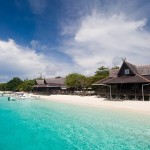- Home
- Transportation
- Our Tour Packages
- Tours & Itinerary 1 Daytrip In Sabah
- DAY TRIP KUNDASANG (BUDGET)
- Tours & Itinerary 2 Day 1 Night
- Tours & Itinerary 3 Day 2 Night
- Tours & Itinerary 4 Day 3 Night Sabah
- Tours & Itinerary 5 Day 4 Night
- Tours & Itinerary 6 Day 5 Night
- Tours & Itinerary 7 Day 6 Night
- Tours & Itinerary 9 Day 8 Night
- Tours & Itinerary 10 Day 9 Night
- Borneo Tours & Itinerary 11 Day 10 Night
- Tours & Itinerary 15 Day 14 Night
- Tourist Attraction
- Photo Gallery
- (New)!!! Outbound Tour
- PROMOTION HOLIDAY
- Accomodation
- News
Location: Sabah Malaysia
Book Now!Pulau Tiga Survivor Island 迪加島 倖存者島
Pulau Tiga Survivor Island 迪加島 倖存者島
Explore the Wonders of Sabah Malaysia
The park covers 158 square kilometers of mostly ocean, containing the 3 islands of Pulau Tiga, Pulau Kalampunian Besar and Pulau Kalampunian Damit. The islands were formed in 1897 by the eruption of mud volcanos. Pulau Tiga is now covered in dense vegetation; however volcanic activity continues in the form of bubbling mud and methane gas venting, although the last major outpouring of mud was in the early 1960s. Pulau Kalampunian Besar is now little more than a sandbar, eroded away by wave action. Known for its sugar-white sands and clear waters, it is popular for scuba diving and snorkeling. It was also the location of both the US and UK versions of the reality TV show “Survivor”. Pulau Kalampunian Damit, little more than a large rock, is also called Pulau Ular (Snake Island). It is famous as a mating location for highly poisonous sea snakes. Pulau Tiga and its surrounding sea is home to a diverse number of interesting animal species. Poisonous sea snakes, proboscis and macaque monkeys, flying foxes, bats, sharks, monitor lizards, barracuda (a total of 132 species of fish exist in the park), sea turtles, and a plethora of birds – including megapodes, hornbills and sea eagles all call Pulau Tiga home. The sea snakes, twice as poisonous as the King Cobra, are capable of killing a human with its venom in approximately five minutes. The megapode birds build their nests on the ground and lay their eggs a few feet deep in piles of sand and debris; when the chicks hatch they dig their way out of their nest, unguarded by their parents. The undisturbed shoreline abounds with a colourful variety of plant life such as Barringtonia Asiatica easily distinguished by its delicate white flowers with pink stamenlike filaments. There are also Callophylum, Termanillia catappa, and Casuarina not forgetting the Ardisia, a small bushy tree with clusters of tiny pink flowers. The Ranggu and Keruing are also abundant here. One particularly important tree among the islanders is the Hibiscus tiliaceus, a tree with bright yellow flowers whose fibrous bark is used for ropes and boat caulking. The waters that surrounded Palau Tiga Island is also home of awesome and exotic underwater creatures. Visitors and tourist especially those people who love scuba diving will see the beauty of the underwater life such beautiful corals reefs and exotic marine life.




